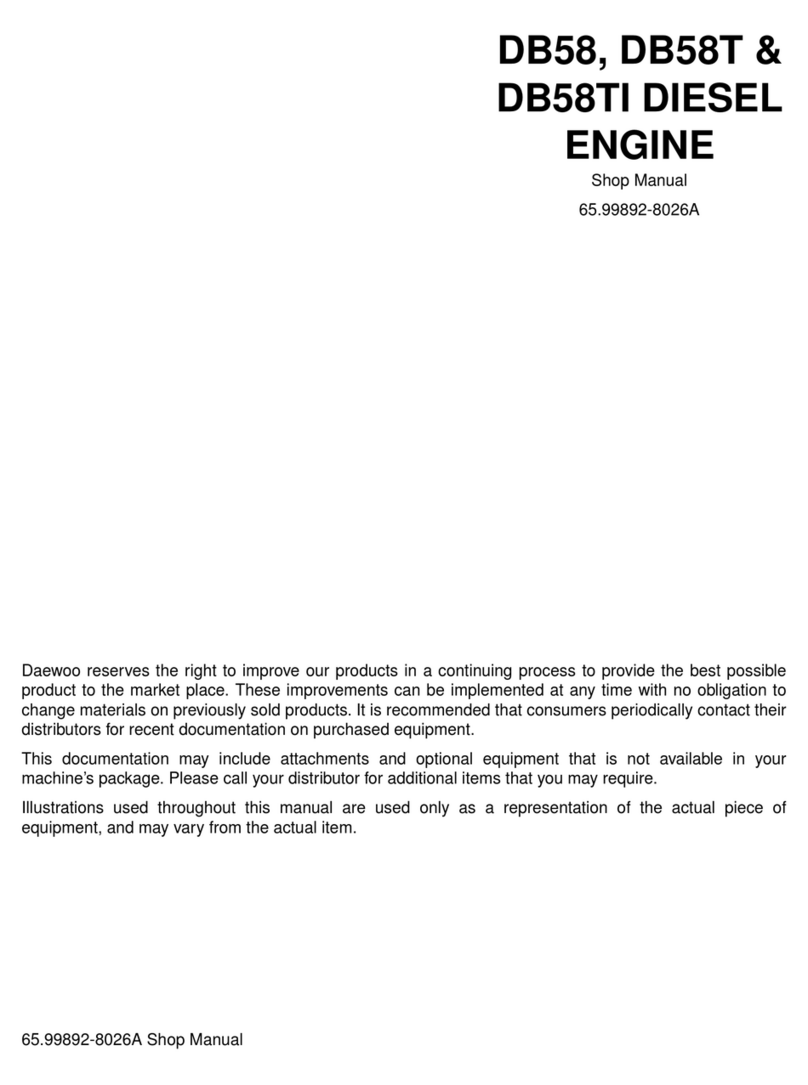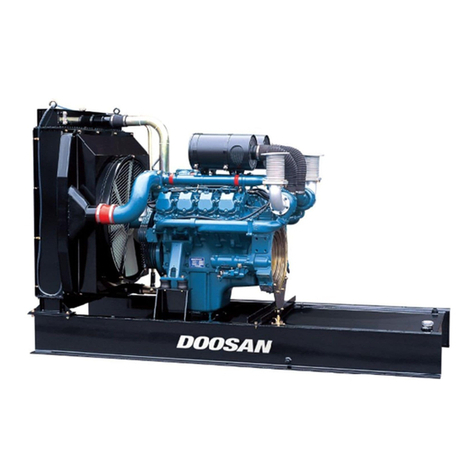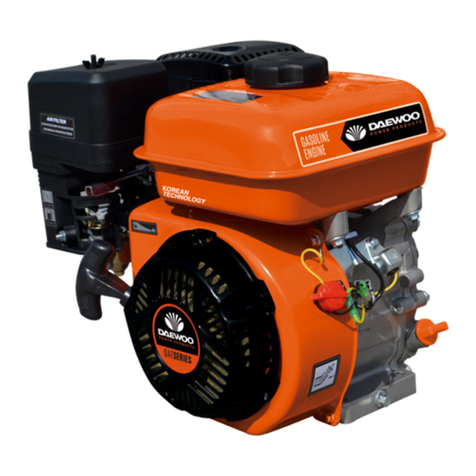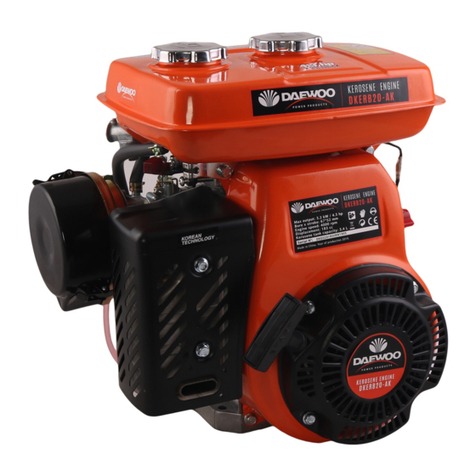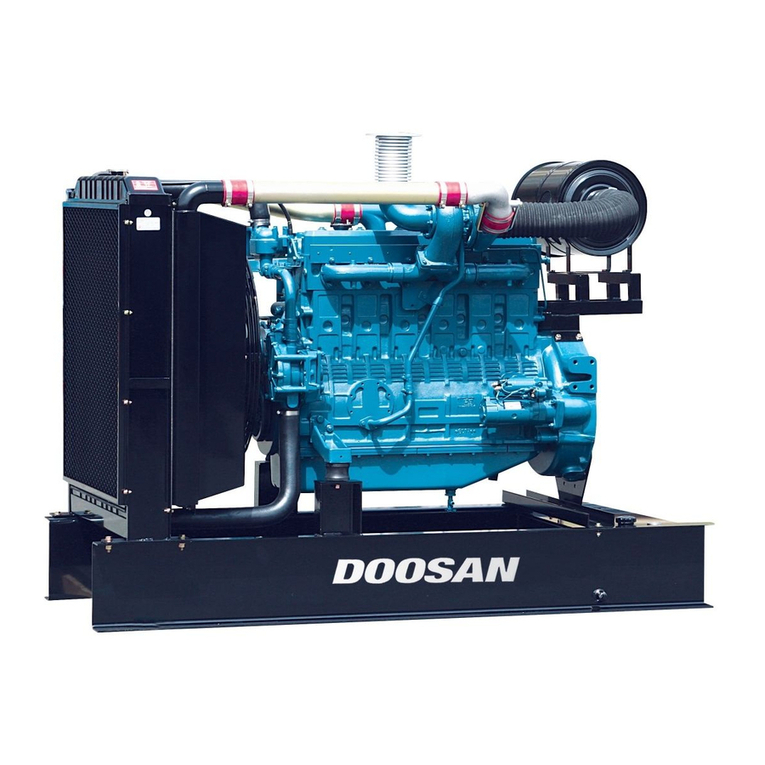1.3. Regulations Designed to Prevent Damage to Engine and Premature Wear
(1) Never demand more of the engine than it was designed to yield for its intended purpose.
Detailed information on this can be found in the sales literature.The injection pump
must not be adjusted without prior written permission of DAEWOO.
(2) If faults occur, find the cause immediately and have it eliminate in order to prevent more serious
of damage.
(3) Use only genuine DAEWOO spare parts. DAEWOO will accept no responsibility for damage
resulting from the installation of other parts which are supposedly “just as good”.
(4) In addition to the above, note the following points.
•
Never let the engine run when dry, i.e. without lube oil or coolant. Use only DAEWOO
approved service products (engine oil, anti-freeze and anticorrosion agent).
•
Pay attention to cleanliness, The Diesel fuel must be free of water. See “Maintenance and
care”.
•
Have the engine maintained at the specified intervals.
•
Do not switch off the engine immediately when it is warm, but let it run without load for
about 5 minutes so that temperature equalization can take place.
•
Never put cold coolant into an overheated engine. See “Maintenance and care”.
•
Do not add so much engine oil that the oil level rises above the max. marking on the dipstick.
Do not exceed the maximum permissible tilt of the engine. Serious damage to the engine
may result if these instructions are not adhered to.
•
Always ensure that the testing and monitoring equipment (for battery charge, oil pressure,
and coolant temperature) function satisfactorily.
•
Comply with instructions for operation of the alternator. See “Commissioning and opera-
tion”.
•
Do not let the water pump run dry. If there is a risk of frost, drain the water when the engine
switched off.
1.4. Regulations Designed to Prevent Pollution
1.4.1. Engine oil, filter catridge, fuel filter
•
Take old oil only to an oil collection point.Take strict precautions to ensure that oil does not
get into the drains or into the ground.
•
The drinking water supply may be contaminated.
•
Oil and fuel filter elements are classed as dangerous waste and must be treated as such.
1.4.2. Coolant
•
Treat undiluted anti-corrosion agent and / or antifreeze as dangerous waste.
•
When disposing of spent coolant comply with the regulations of the relevant local authorities.
- 3 -
SAFETY REGULATIONS & ENGINE SPECIFICATIONS

